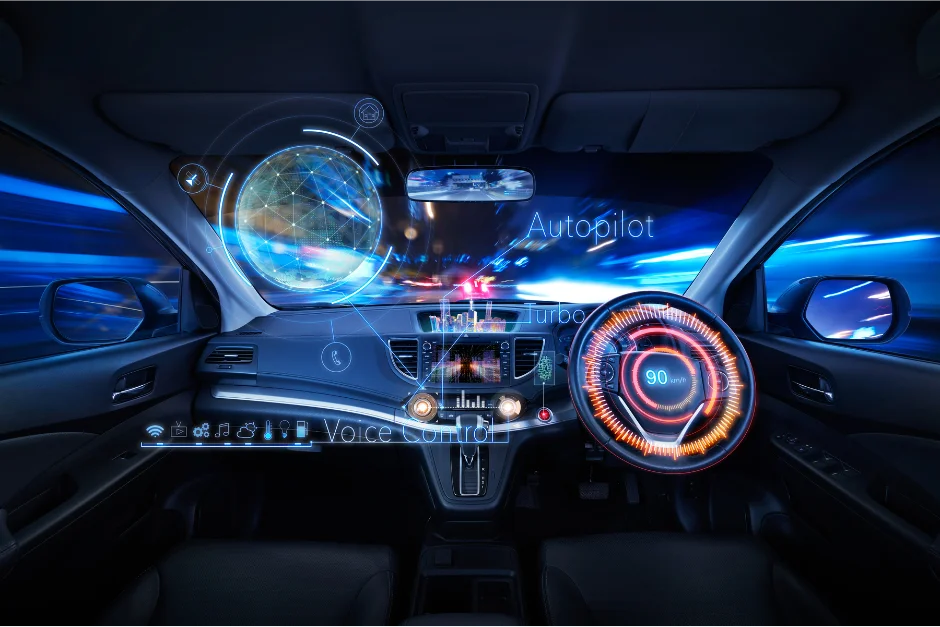
04 Jan Automotive Interior Trends in 2024
As the growth of EV vehicles continues, automotive manufacturers are taking the opportunity to use these new models to experiment with their interior designs, reimagining the cabin experience as a place of comfort, style and connection for the end user.
Indeed, there seems to have been a shift in focus from the vehicle exterior to the interior when it comes to making new car models stand out on the market. A recent Mckinsey survey reported that 71% of automotive executives expected vehicle interiors to become more important, whilst only 38% held the same view about vehicle exteriors.[1]
Here we’ll explore some of the key trends you can expect to see from the market in 2024.
Minimalism
Inspired by modern interior design trends, automotive manufacturers are embracing minimalism and spatial efficiency.
Tesla set the tone when it came to EV interiors, with their sleek, minimalist cabin featuring only a single large screen. When this was first revealed to the market, it was groundbreaking. Since then, it has become common place, with many manufacturers following suit, with everything from heat to volume being controlled through a central control screen, rather than buttons and dials.
It’s a divisive aesthetic, with people either loving it or hating it. But for now, it’s here to stay.
Technology
Over the past few years, connectivity and entertainment options within cars have evolved rapidly as the world becomes increasingly digital.
From a dazzling array of screens, cameras replacing wing mirrors, voice-controlled systems and seamless connection with personal devices, there are already a lot of gadgets to geek out on in modern cars.
In 2024, expect to see this continue to evolve further. Many new models will come to market with 5g connectivity to ensure better software performance, enhanced navigation and faster music and video streaming capabilities. Taking this a step further, both DS Automotive and Mercedes have announced plans to trial ChatGPT in new models, incorporating AI into the driving experience.
Whether for navigation, communication, or leisure, these features will ensure that passengers are always engaged and connected.
Sustainability
OEMs aren’t just depending on the move to electric vehicles to meet their green obligations, many are making a conscious effort to be as green as possible within their cabins too.
In 2024, you can expect to see a continued move towards recycled, upcycled and bio-based materials being utilised within vehicle interiors, as an eco-friendly alternative to traditional plastics and synthetic materials.
Additionally, there is a growing awareness of hazardous substances and processes within the supply chain, so alternatives to chrome plating and coating methods, such as PVD, will continue to become more prevalent.
Bespoke
There has been a huge growth in the rise of bespoke, customised vehicles, as customers look for something that is unique and tailored to them.
From custom upholstery, handcrafted detailing, personalised colour schemes and innovative cabin features, many automakers are offering their customers the chance to express their individuality and reflect their personality within their vehicle interior.
This will continue into 2024 and beyond, with many OEMs capitalising on this trend as an opportunity to engage new customers, develop their brand identity and boost profit margins.
Conclusion
Christie Schweinsberg, the editor of Wards Auto, says, “For automotive interior and user-experience technology enthusiasts, there’s perhaps been no better era to be alive. The creative design cues we’re witnessing are bold and refreshing, and trim materials are unique and eye-catching.” [2]
We agree. The automotive interior trends that we’ll see emerge throughout 2024 are a testament to the industry’s commitment to innovation, sustainability, and an enhanced driving experience. As we move closer to autonomous vehicles becoming mainstream, one thing is clear: the interior of a car is no longer just a functional space. It’s a dynamic canvas for creativity, technology, and human-centred design.
To see how we can help make your design ideas a reality, contact us today.
[2] https://www.hotcars.com/electric-vehicle-interiors-ux-are-the-best-ever/



Sorry, the comment form is closed at this time.